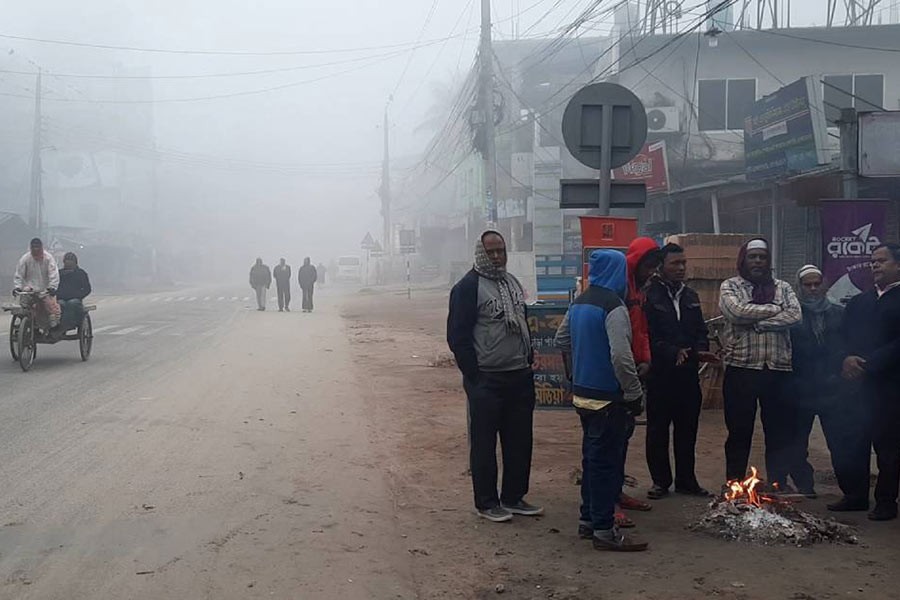
Published :
Updated :

Most of the people were taken off guard by the severity of this year's cold waves. In spite of being habituated with nearly annual cold spells, people in the country's northern region this year found it hard to endure the harshness of the winter bite. The worst segment of them comprised under-5 children followed by the disadvantaged elderly. Thanks to the easy availability of winter clothes, the poorer people in the region could withstand the initial attacks of cold. But the problem lay with their shelters, which were mostly ramshackle and not strong enough to keep cold at bay. Farm hands, day labourers, operators of non-mechanised vehicles and many vulnerable people were also hit hard. The latter's plight jeopardised their livelihood, exacting a considerable toll on the local, as well as wider economy. It was because the repeated attacks of cold, coupled with a prolonged foggy weather, have left a damaging impact on business. The scenario was a common spectacle in the areas vulnerable to winter.
The capital Dhaka has also not been free of the typical impacts spawned by its winter. Winter this year descended on the city with a number of afflictions, coming in the form of diseases. Normally, the cold season brings with it some common health hazards. This year these ailments appeared to have turned serious. When the normally-occurring pneumonia, diarrhoea, respiratory and bronchial diseases lead to large-scale child deaths, the issue cannot be taken perfunctorily. The elderly population will suffer mainly from asthma, which has only kept deteriorating with the capital remaining under the grip of cold.
According to reliable sources, the extent of the patients' admission to hospitals and clinics nearly doubled this year compared to other times. It only portrays a grim picture of the overall scenario. The Asthma Centre at the capital's Shishu Hospital was said to have admitted mainly the child patients of pneumonia and bronchitis during the peak time of winter. As has been observed by a child specialist, external pollution, viz. exhaust fumes, dust particles and the pollutants inside residences play a big part in the outbreak of respiratory diseases among children. Meanwhile, the Health Emergency Operations Centre and Control Room at the Health Directorate Department do inform that 302,710 patients were attacked with pneumonia, asthma and respiratory problems and other cold related diseases from November 1 to January 5. The ailments also included dysentery, fever, jaundice, skin diseases etc. Many also suffered from eye complications.
Minor and major diseases caused by winter cold and related hazards like outdoor dust and air pollutions stage their comeback every year. This has become a noticeable phenomenon in the recent decade. The severity of cold this year stands out for the abrupt and intermittent manner in which this has kept occurring. But there are other culprits, too. The most dominant of them is the declining air quality. In order to have a pleasant Bengali winter, the focus ought to be on waging an all-out battle against air pollution. Creating disease awareness also warrants urgency across the board.


 For all latest news, follow The Financial Express Google News channel.
For all latest news, follow The Financial Express Google News channel.